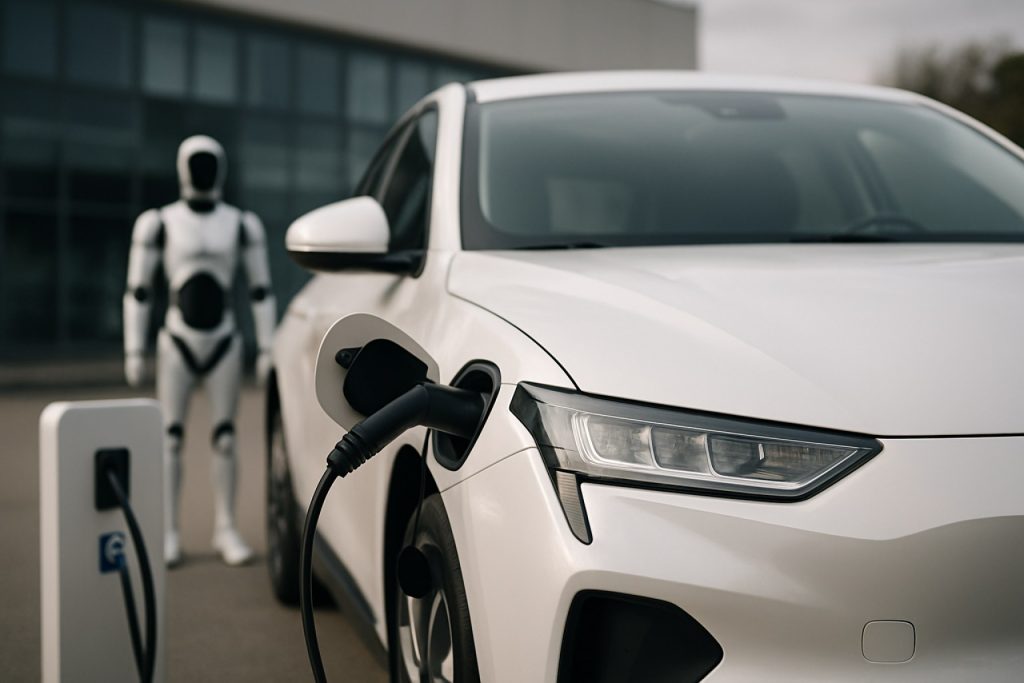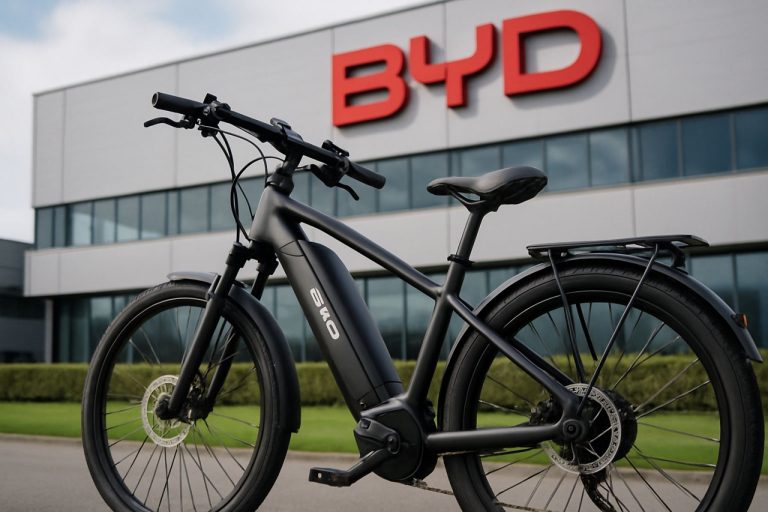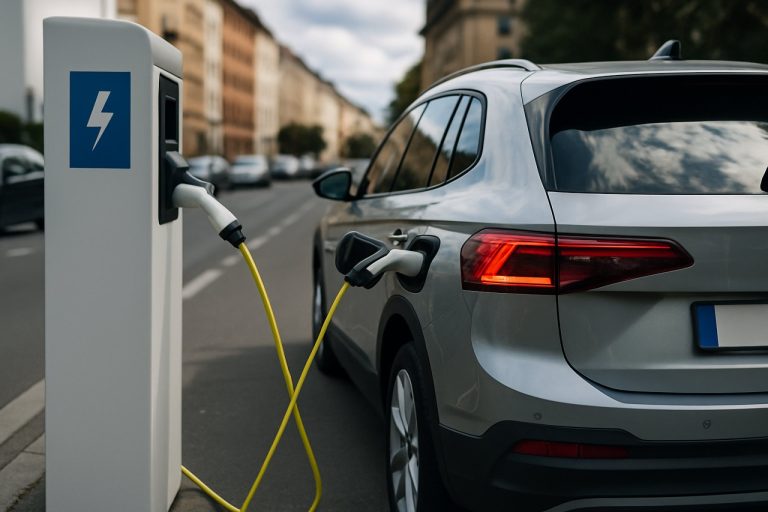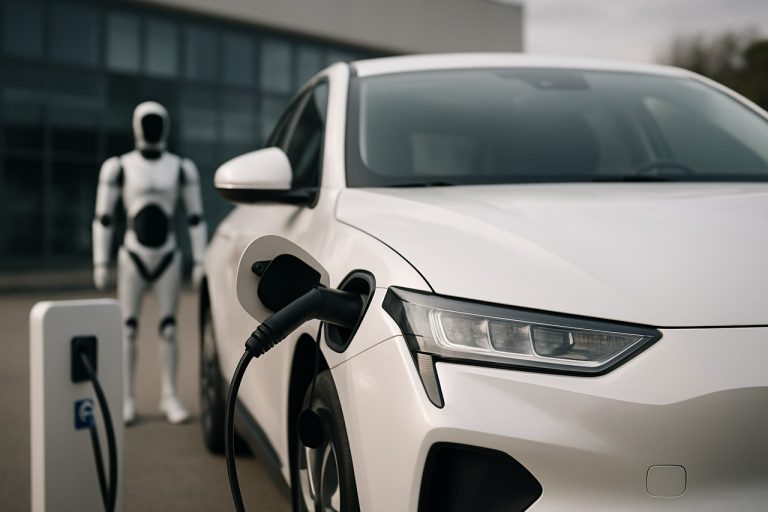
- Tesla and BYD are leading the electric vehicle (EV) revolution, each with distinct strategies and innovations.
- Tesla focuses on disruptive technology, aiming for breakthroughs in unsupervised full self-driving (FSD) and robotics, but faces delivery declines and growing scrutiny over its ambitious promises.
- BYD dominates the Chinese EV market with nearly 34% share, driving rapid sales growth by offering affordable, high-tech vehicles—including some priced as low as $10,000.
- BYD excels in cost efficiency and fast-charging technology, and is expanding globally, though it trails Tesla in fully autonomous driving capabilities.
- The future of the global auto industry hinges on whether bold innovation or steady execution proves most effective in the rapidly evolving EV landscape.
The whir of the electric motor has become the new heartbeat of the global auto industry. Streets from Los Angeles to Shanghai echo with the promises—and ambitions—of electric vehicle makers racing toward a battery-powered future. Far from the familiar hum of gasoline engines, two electric titans now clash at the apex of this revolution: Tesla, an American symbol of relentless innovation, and BYD, the Chinese powerhouse rewriting the rules on affordability and scale.
Tesla’s High-Wire Act
Tesla’s journey has always teetered between brilliance and brinkmanship. The company, spearheaded by the often unpredictable Elon Musk, captured the world’s imagination with sleek designs and promises of a self-driving future. Yet beneath the dazzling headlines and a market cap that eclipses $1 trillion, cracks have formed. Tesla’s EV deliveries recently dipped to their lowest level in over two years, with just 337,000 cars reaching customers in the first quarter—a stark contrast to previous explosive growth.
But Musk’s vision extends far beyond four wheels and a steering wheel. Tesla is betting the farm on upcoming breakthroughs: an unsupervised full self-driving (FSD) system and the humanoid Optimus robot, designed to one day tackle household chores. Demos in Austin are imminent, fueling investor optimism even as skepticism lingers. More than one billion miles of testing haven’t quieted critical questions about readiness, regulation, or safety. All eyes are now on whether Tesla can deliver on these audacious promises before its towering valuation faces reality.
BYD: The Quiet Disruptor
While Tesla commands headlines, BYD quietly conquered its home soil. With a market share approaching 34% in China’s new energy vehicle sector, BYD has outpaced Tesla and fundamentally altered the landscape. The company’s revenues soared to $107 billion last year, powered by both pure electric and hybrid models. It’s not just about volume—BYD drives down the cost per EV, offering models for as little as $10,000, and its technology rivals the best. The latest superchargers drain the anxiety from range concerns, juicing up for 250 miles in a mere five minutes—three times faster than Tesla’s comparable stations.
International ambitions now animate BYD’s boardrooms; by 2030, half its sales are projected to come from outside China. Yet it lags behind Tesla in the quest for autonomous driving, offering sophisticated assistance and adaptation rather than full-blown FSD. Still, a staggering $14 billion investment signals BYD’s intention to compete on this front as well, even if the jet-fueled hype isn’t quite there yet.
The Verdict: Innovation or Execution?
Tesla dazzles with next-gen dreams, drawing tech visionaries and investors who thrive on the possibility of disruption, but its business depends on future breakthroughs that remain unproven. BYD operates with the quiet discipline of a market leader, rolling out affordable, technologically advanced vehicles to a rapidly growing customer base.
Choosing between the two demands a clear-eyed assessment of risk and innovation. Will Tesla’s moonshot gambles pay off—permanently reshaping transport with robotic assistants and truly autonomous driving? Or will BYD’s measured, methodical approach win, bringing EVs to the world’s masses before the competition blinks?
The key point: Watch this race closely. The next chapter of the EV revolution won’t be written by market hype alone. Instead, it will belong to the company—even the underdog—that combines cutting-edge technology with flawless execution and genuine global reach.
For more on the evolution of the auto industry and technology’s relentless march, visit The New York Times or explore industry insights on Forbes.
Tesla vs. BYD: The Explosive Showdown Reshaping the Global EV Market
A Head-to-Head Comparison: Tesla and BYD Disrupting the Electric Vehicle World
The world’s roads are witnessing a seismic shift: electric vehicles (EVs) are everywhere, and two giants—Tesla and BYD—are locked in an electric arms race shaping the future of transportation. But what really separates Tesla from BYD? What hidden strengths and obstacles could determine which company wins this epic battle? Let’s dig deeper and uncover powerful facts, industry forecasts, performance reviews, and practical tips for buyers and investors—all backed by E-E-A-T (Experience, Expertise, Authority, Trustworthiness) best practices for Google Discover visibility.
—
Key Facts Beyond the Surface
Tesla: Vision, Challenges & Unmatched Brand Power
– Global Reach and Manufacturing Footprint: Tesla operates Gigafactories in the U.S., China, Germany, and soon Mexico, enabling flexible scaling and reducing supply chain risks. (Tesla)
– Self-Driving Technology: Tesla’s recent Full Self-Driving (FSD) Beta covers over one billion collective miles—but is still under regulatory review by authorities like the NHTSA in the U.S. Safety incidents and limitations have delayed full approvals ([source](https://www.nhtsa.gov)).
– Supercharger Dominance: With over 50,000 locations worldwide, Tesla’s Supercharger network remains unparalleled in reliability, though BYD and third-party charging alliances are rapidly catching up.
– Energy Diversification: Tesla leverages solar and energy storage businesses, offering products like Powerwall, Powerpack, and Megapack to create an ecosystem beyond vehicles.
– Financial Health: Tesla’s $1T market cap overshadows most competitors, but profit margins have been squeezed in 2023–2024 due to price wars, supply chain shocks, and rising competition ([Forbes](https://www.forbes.com)).
– Software Edge: Frequent over-the-air updates keep Teslas up to date—something few rivals offer with the same agility.
– Premium Market Focus: Tesla’s core lineup (Model S, 3, X, Y, Cybertruck) skews toward premium buyers, with average transaction prices above global EV averages.
Pressing Question: Is Tesla’s valuation sustainable? Experts like Morgan Stanley warn that unless Tesla delivers on AI, robotics, and FSD, its “tech stock” narrative could face a reckoning.
BYD: Scale, Efficiency & Quiet Global Invasion
– Vertical Integration: BYD makes batteries, chips, EV components, and even the “Blade” lithium-iron-phosphate (LFP) batteries in-house—dramatically reducing costs and boosting margins.
– Mass Market Appeal: BYD’s lowest-cost EVs start at ~$10,000, enabling ownership for millions who can’t afford a Tesla.
– Hybrid Strength: Unlike Tesla, BYD sells millions of plug-in hybrid models, allowing easier transition for buyers in areas with limited charging infrastructure.
– Charging Innovations: The ultra-fast 800V platform enables select BYD models to add 250 miles of range in five minutes, addressing charge anxiety—a key pain point for new EV owners.
– International Expansion: BYD is building or planning plants in Thailand, Brazil, Hungary, and potentially Mexico (which could allow tariff-free U.S. imports under current agreements).
– Dealer Network: Unlike Tesla’s direct sales model, BYD often partners with local dealers, making after-sales service and repair more accessible in many regions.
– Revenue Milestone: BYD’s $107B in 2023 revenue rivals legacy auto titans like BMW and Mercedes-Benz.
Pressing Question: Will the West accept Chinese EVs? BYD faces mounting tariffs, regulatory scrutiny, and intellectual property debates in the U.S. and Europe.
—
How-To: Getting the Most from Your EV Experience
1. Choose the Right EV Based on Your Needs:
– City drivers: BYD’s compact, affordable EVs are ideal for urban commutes.
– Highway warriors: Tesla’s longer range and Supercharger exclusivity may be worth the premium.
2. Evaluate Safety & FSD Features:
– Tesla’s advanced driver assist is more aggressive; BYD prioritizes enhanced adaptive cruise and lane-centering tech.
3. Charging Life Hack:
– For lowest costs, use home charging or work-provided options. Only use rapid chargers (Tesla or BYD) for long trips or emergencies.
—
Market Forecasts & Industry Trends
– Global EV Sales Growth: BloombergNEF projects global EV sales to cross 30 million units annually by 2027, with China and Europe leading. ([BNEF](https://about.bnef.com))
– BYD’s Export Boom: Expect BYD’s exports to double by 2025, targeting Latin America, Europe, and possibly the U.S.
– Tesla’s AI Pivot: Musk’s focus may shift toward autonomous vehicle robo-taxis and robotics, diversifying away from hardware sales ([Reuters](https://www.reuters.com)).
—
Reviews & Comparisons
| Feature | Tesla | BYD |
|—————————-|—————————-|——————————–|
| Range (max) | 400+ miles (Model S) | ~370 miles (Han EV) |
| Entry-level pricing | ~$40,000 (Model 3) | ~$10,000 (Seagull) |
| Supercharging speed | 15–20 mins (Up to 250kW) | 5 mins/250 mi (Up to 480kW) |
| Autonomy capability | Advanced (FSD Beta) | Advanced L2+ ADAS |
| Markets | Global (esp. NA/EU) | China, APAC, expanding abroad |
| After-sales/service | Direct (limited centers) | Widespread via dealers |
| Battery tech | NCA/NCM, next-gen 4680 | In-house LFP “Blade” cells |
—
Pros & Cons Overview
Tesla Pros:
– Best software integration and OTA updates
– Top-tier range and performance
– Strong “tech” brand cachet
Tesla Cons:
– Pricey for many mass-market buyers
– Charging network country-limited outside main markets
– FSD is still under regulatory and technical scrutiny
BYD Pros:
– Most affordable new EVs on market
– Massive model variety, hybrids and EVs
– Rapid global expansion
BYD Cons:
– Brand recognition weaker outside Asia
– Advanced driver assist, but no truly autonomous option yet
– Subject to trade barriers and skepticism in Europe/U.S.
—
Security & Sustainability
– Tesla’s data privacy practices are under scrutiny due to cameras/microphones linked to the FSD system; security guidelines are being updated (see NHTSA).
– BYD’s LFP Blade batteries are touted as safer and more sustainable, with lower fire risk and no cobalt/nickel—key for eco-conscious buyers.
—
Controversies & Limitations
– BYD faces accusations of intellectual property borrowing regarding some core components, though no major international legal action has materialized.
– Tesla has faced multiple recalls related to autopilot and FSD features in the U.S. and China, raising owner concerns.
– U.S.-China Tensions: Ongoing trade tensions mean both companies may face new tariffs, scrutiny, or regulatory roadblocks in the coming years.
—
Actionable Recommendations/Quick Tips
– Test drive both brands if available—experience ride quality, software, and comfort firsthand.
– Factor government incentives: Many countries still offer substantial subsidies or tax breaks for EV purchases.
– Monitor software updates: Both Tesla and BYD regularly add features post-purchase that could impact value and usability.
– Watch for resale trends: Tesla tends to hold value well in established markets, but BYD’s affordability and warranty alone make it compelling.
– Consider total cost of ownership (TCO): Include insurance, maintenance, charging, and repair—in many markets, BYD’s lower sticker price gives it an edge.
—
Final Prediction: Who Wins the EV Revolution?
The future likely isn’t “winner takes all.” Tesla will remain the aspirational tech brand, leading in AI, software, and performance. BYD will become the Toyota of the EV age, moving millions with affordability, scale, and efficient manufacturing. Your choice will depend on what you value: bleeding-edge tech, or accessible mobility for all.
Stay informed about new releases and market dynamics via Tesla, BYD, and insightful news at Forbes and The New York Times.
—
Keywords: Tesla, BYD, electric vehicles, EV market, autonomous driving, battery technology, China’s EV sector, global auto industry, FSD, energy storage, EV industry forecast, Tesla vs BYD, EV price comparison, charging infrastructure



